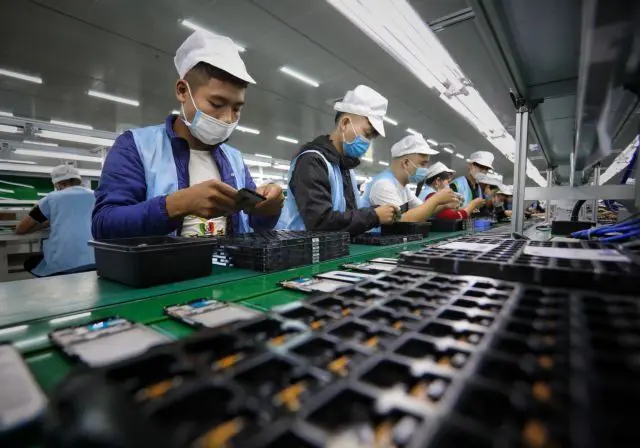Tensions Rise Amid Trade Talks
In ongoing negotiations ahead of a looming U.S. tariff deadline on July 8, 2025, Washington is urging Vietnam to sharply reduce its reliance on Chinese technology—specifically in goods manufactured locally and exported to the U.S. The pressure stems from a broader policy push to decouple from Chinese high-tech products.
Vietnam’s factories—assembling smartphones, VR headsets, and other electronics for brands like Apple, Samsung, Meta, and Google—heavily depend on Chinese imports of components and hardware.
Tariff Threats at Center Stage
Officials revealed that U.S. authorities are prepared to impose “reciprocal” tariffs of up to 46% on Vietnamese-made goods if Chinese content remains prevalent. While Vietnam recognizes the importance of meeting U.S. demands, local businesses warn that abrupt changes could jeopardize current operations.
Negotiations Show Small Gains — But Gaps Remain
During the third round of talks in Washington (June 9–12), trade ministers acknowledged “progress” on addressing U.S. demands, including efforts to curb illegal shipments of Chinese items labeled “Made in Vietnam.” A follow-up online meeting between Vietnam’s Trade Minister Nguyen Hong Dien and U.S. Secretary of Commerce Howard Lutnick is being planned to close remaining gaps.
Vietnam Grapples with Supply Chain Dependence
China exported approximately $44 billion worth of tech components to Vietnam last year—about 30% of Vietnam’s tech imports. Vietnam in turn exported around $33 billion in tech to the U.S.—making up 28% of its U.S.-bound exports. Vietnamese leaders are exploring the development of domestic suppliers to gradually reduce reliance, but analysts caution it would require years of investment and industrial scaling.
“Friend‑Shoring” Strategy Gains Momentum
This push aligns with Washington’s broader “friend‑shoring” strategy—shifting tech supply chains from China toward trusted allies like Vietnam. The policy echoes earlier efforts by the Biden administration to build resilient semiconductor and AI ecosystems in key partner nations. U.S. firms such as Intel, Amkor, Synopsys, and Nvidia have already committed to sizable investments in Vietnam’s chip assembly, testing, R&D, and AI sectors.
Vietnam’s Strategic Tightrope
While Vietnam is eager to diversify its supply chain and deepen economic ties with the U.S., it also maintains a complex and growing relationship with China. Chinese investment, trade links, and political engagement—highlighted by recent visits and infrastructure agreements—remain strong. Industry analysts estimate Vietnam lags by 15–20 years in supply chain scale and sophistication compared to China.
Implications for Vietnam’s Economy
-
Short-term disruption risk: Sudden supply chain shifts could delay production, increase costs, and unsettle exporters.
-
Long-term opportunity: Reducing Chinese component dependency could help Vietnam develop its own industrial ecosystem, create higher-tech jobs, and strengthen its strategic importance in global tech supply chains.
-
Geopolitical balancing act: Vietnam must navigate U.S. demands without alienating China, a vital trade partner and regional neighbor.
As the July 8 tariff deadline approaches, Vietnam and the U.S. are working to finalize terms that satisfy Washington’s decoupling objectives without crippling Vietnam’s export-led economy. The outcome could signal whether Vietnam can successfully pivot toward autonomy while continuing to integrate with both superpowers.



